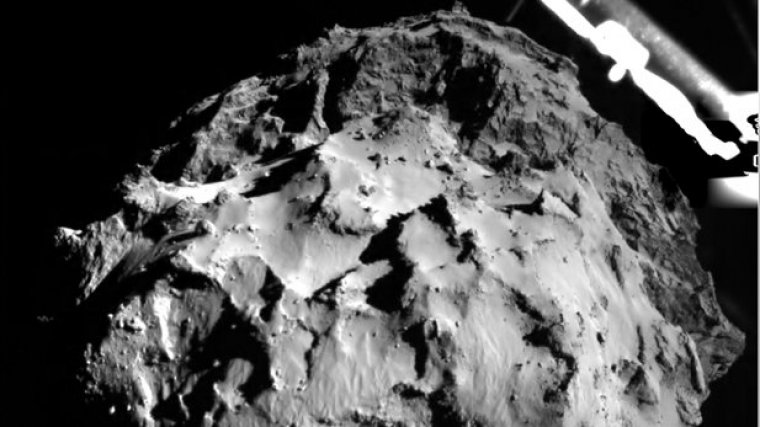| News / Science News |
Rosetta's 'Philae' Makes Historic First Landing on a Comet
NASA | NOVEMBER 12, 2014
After more than a decade traveling through space, a robotic lander built by the European Space Agency has made the first-ever soft landing of a spacecraft on a comet.

This image of comet 67P/Churyumov-Gerasimenko was taken during Philae's descent toward the comet on Nov. 12, 2014. Philae's ROLIS camera took the image from a distance of approximately two miles (three kilometers) from the surface.![]()
Mission controllers at ESA's mission operations center in Darmstadt, Germany, received a signal confirming that the Philae lander had touched down on comet 67P/Churyumov-Gerasimenko on Wednesday, Nov. 12, just after 8 a.m. PST/11 a.m. EST.
The lander is expected to send images from its landing site, named Agilkia. These will be the first images ever taken from a comet's surface. Philae will also drill into the surface to study the composition, and witness close up how a comet changes as its exposure to the sun varies.
With its primary battery, Philae will remain active on the surface for about two-and-a-half days. Philae's mothership, the Rosetta spacecraft, will remain in orbit around the comet through 2015. The orbiter will continue detailed studies as the comet approaches the sun and then moves away.
In addition to their well-deserved reputation as beautiful cosmic objects, comets hold vital clues about our solar system's history. They are considered primitive building blocks of the solar system that are literally frozen in time. Comets may have played a part in "seeding" Earth with water and, possibly, the basic ingredients for life.
YOU MAY ALSO LIKE




